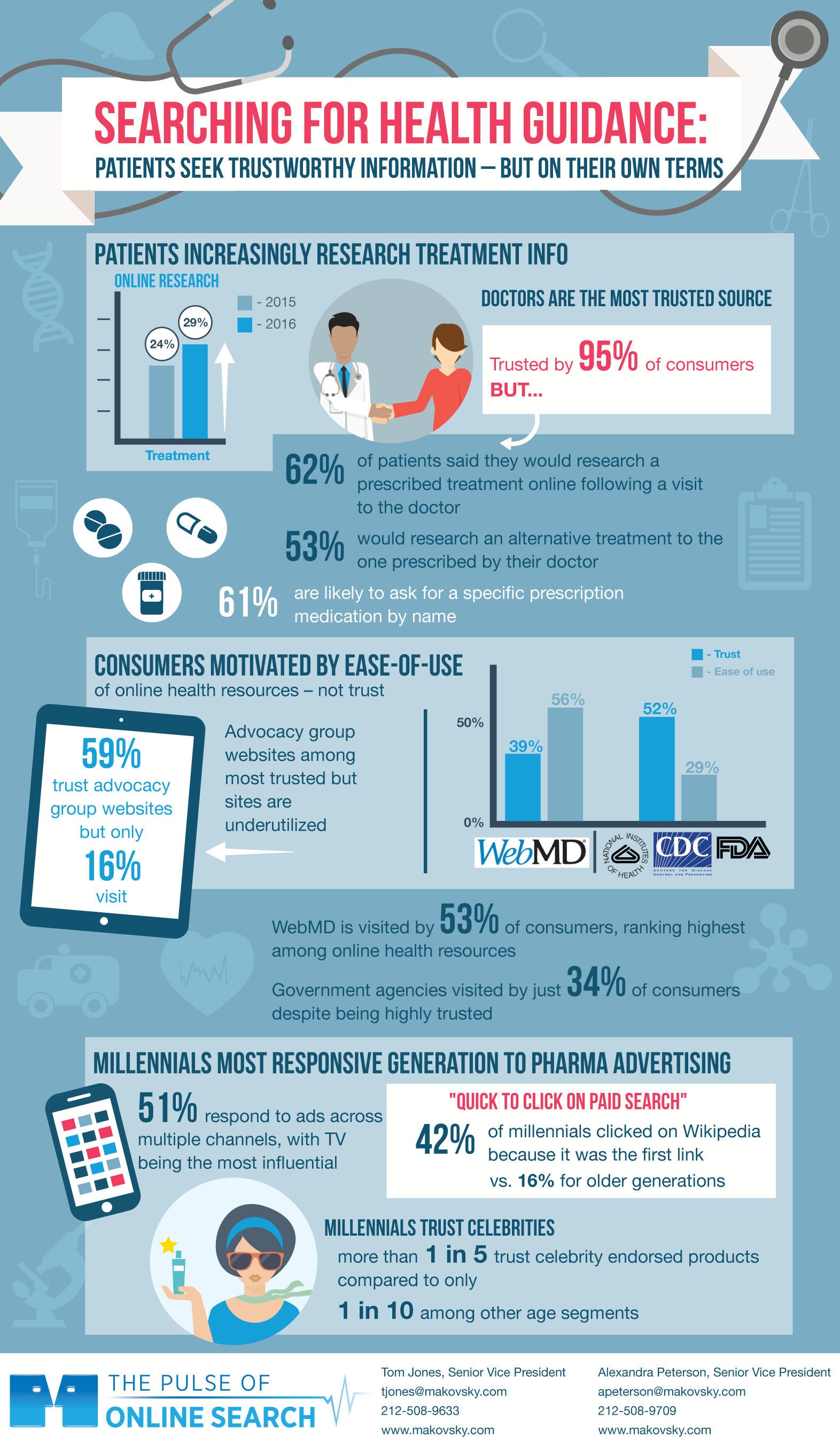Results from the Sixth Annual Makovsky/Kelton “Pulse of Online Search” survey validates the importance of usability in health content. “Consumers continue to leverage online search as a major source for health information and guidance – but despite clear opinions on the trustworthiness of different sources, ease-of-use appears more important than trust when it comes to choosing online health sites.” The survey revealed that although 59% of respondents said they trust health information that comes from advocacy group websites, just 16% said they use these websites to find health information online. This is because although advocacy groups are a trustworthy source, just 29% of consumers said they typically find their websites easy to use. Conversely, only 39% of people said they trust WebMD, but 53% if people said they use WebMD, likely because an even higher number, 56% of people, said WebMD was easy to use.

Understanding the tug-of-war between trust and ease-of-use, in which ease-of-use ultimately wins, is incredibly important for health communicators and wellness administrators as they try to get their population to consume health content. To maximize the impact of health content, employers should focus on ease-of-use and trustworthiness. To maximize ease-of-use, employers should engage in a multi-faceted distribution strategy. This will include traditional forms of communication, such as print and email, as well as more consumer-friendly mediums, such as text messaging. Also, the sources of health content should be consumer-friendly as well. This means not hiding health content behind gated portals, which is what many health engagement platforms do. Requiring users to log in or download an app to access health content pretty much guarantees that it will not be read by most employees and will have minimal impact.
In regard to trustworthiness, employers need to leverage consumer-oriented content from reputable sources as well as build their internal wellness brand. By implementing quality programs that have the employees’ health and wellbeing in mind, employers can build trust with employees, thereby increasing the effectiveness of all their programs. A good start would be cutting programs (biometric screenings, etc.) that often result in harmful outcomes for employees.













